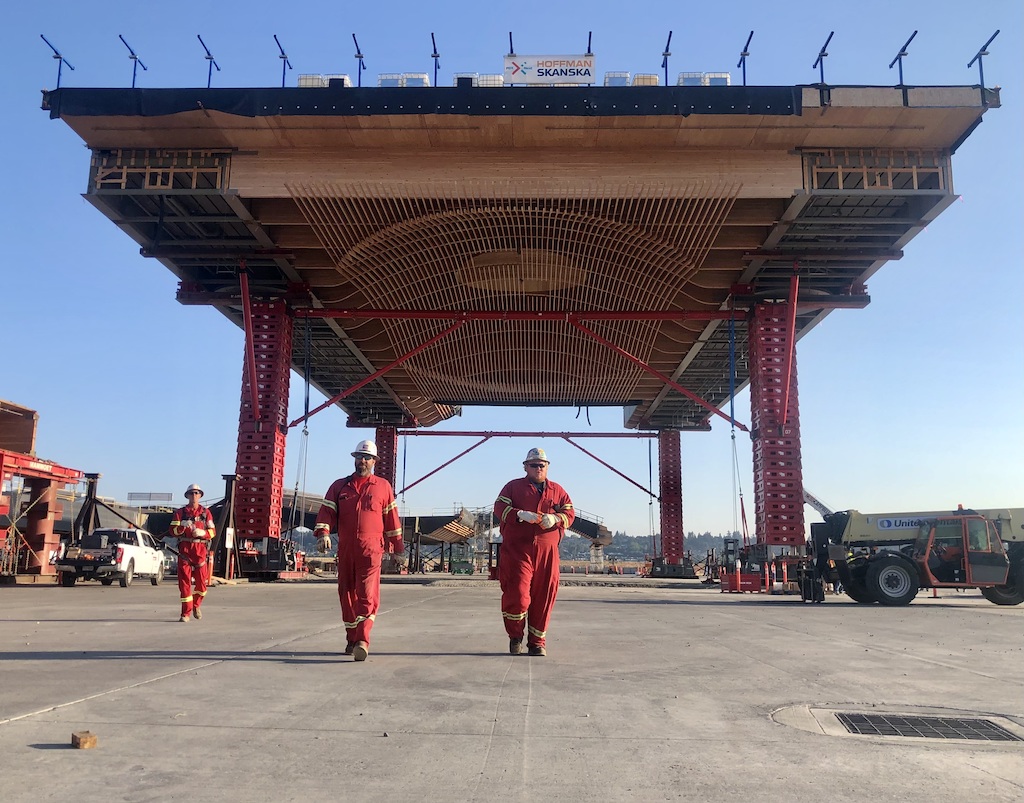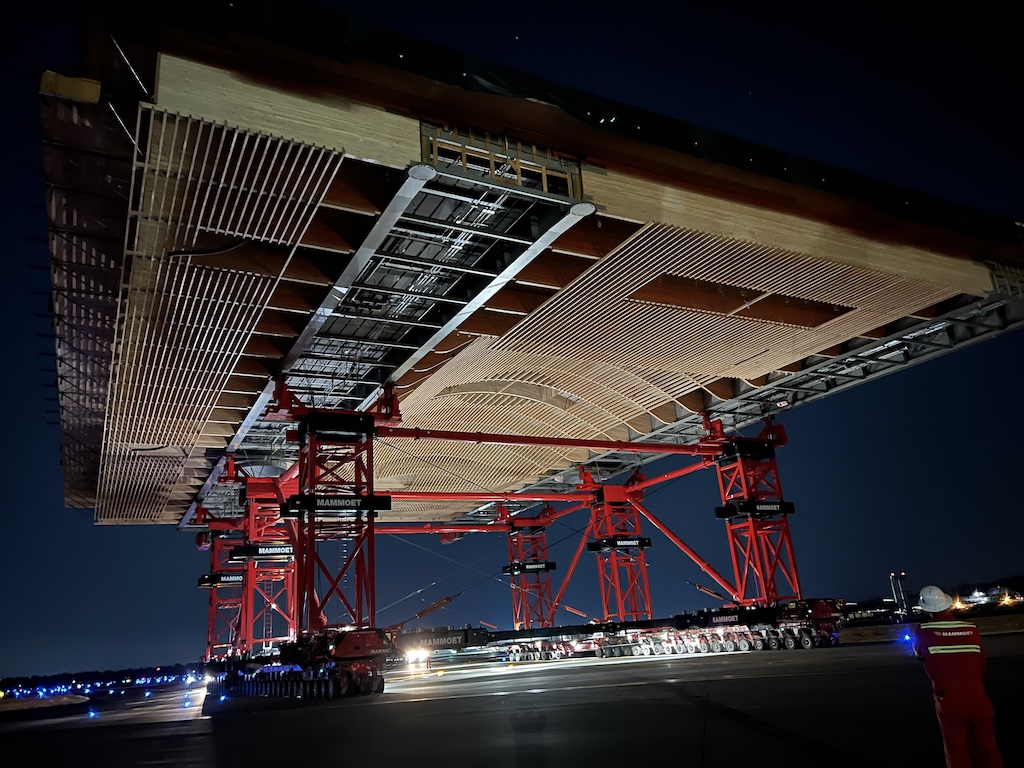Portland International Airport (PDX) is gearing up for substantial growth in the next two decades. To accommodate an estimated 35 million passengers annually, PDX is undergoing a major expansion project, including doubling the size of its main terminal. A critical element of this expansion is the construction of a new, seismically isolated roof structure over the central area of the airport.
Mammoet was contracted to undertake the challenging task of jacking up, transporting, and installing twenty roof panels of various types at PDX. The objective was to complete the project while ensuring minimal disruption to passengers.

The roof, predominantly made of locally sourced sustainable wood, was prefabricated over the course of a year between the active runways of the airport. Prior to transportation, the roof panels were disconnected into manageable sections, roughly the size of a football field, for ease of relocation to the new terminal expansion area. This strategic approach allowed the airport to operate normally during the construction process. Each panel was launched, rolled into place, transported using self-propelled modular transporters (SPMTs), or lifted by crane to its final position, depending on its type.
The weight of the panels ranged from 40 tons to 632 tons, with dimensions reaching up to 72m x 50m x 6m. Mammoet utilized four Mega Jack 800 towers to raise the roof panels to approximately 17 meters, allowing SPMTs with falsework to be positioned beneath each section. At midnight, when the runways were closed, the panels were transported one mile from the laydown yard to the terminal area. The transportation process took place at a careful speed of approximately 1.6 kilometers (or one mile) per hour.

Most panels had to be installed above occupied areas of the existing terminal building. To ensure safety, the work was carried out during strictly enforced overnight closures when the public was kept clear of the construction zone. Once the area was verified to be clear, the installation of the roof panels began. Each panel, known as a super cassette, was skidded into place using strand jacks and lowered onto column isolators. Subsequently, the next set of panels was rolled into position along the bottom flanges of the previously installed panels. Extensive precautions were taken to securely fasten the panels, considering factors such as potential high winds and specific seismic requirements, before allowing the public to reoccupy the area below.
The project presented a significant challenge due to the use of wood material in the roof panels’ construction. Ensuring minimal deflection of the roof panels was a major concern for the client and the roof designers. Therefore, deflection was carefully monitored and kept within strict criteria throughout the jacking, transport, and installation processes. The super cassette pieces were equipped with steel girders in the longitudinal direction to support the 25-meter wooden arches and facilitate the “launching” of the panels using stationary skidding equipment. Temporary towers, supported by wooden piles installed in the 1950s, were used as supports for the launching jacks. To address any potential issues, Mammoet conducted comprehensive friction testing at its Rosharon, Texas yard prior to execution, ensuring no structural damage occurred to a mockup roof panel and that the design values for strand jack anchoring were realistic. During the on-site execution, Mammoet closely monitored the loads and deflections to ensure they aligned with the tested values.
To date, Mammoet has successfully installed sixteen panels, completing phase one of the project. Four additional panels will be installed in 2024 during phase two, once the interior of the new terminal expansion is ready for general occupancy. This achievement adds to Mammoet’s impressive portfolio of airport-related expertise, which includes notable projects such as Seattle-Tacoma International Airport’s elevated pedestrian walkway, the world’s longest airside bridge in Hong Kong, and the transport of airport buildings in Texas.






